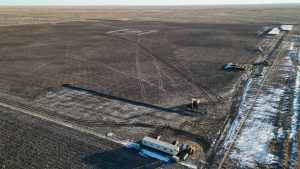Fort McMurray could experience a residential construction boom in 2017 after wildfires destroyed about 10 per cent of city’s housing stock, states a recently released report from the Canada Mortgage and Housing Corporation (CMHC).
"Experience from previous natural disasters in Alberta suggests that many of the destroyed structures will be rebuilt," said Tim Gensey, a market analyst with CMHC in a press release. "Fort McMurray will likely be no exception. Expect increased construction activity in the new home market and declining vacancy rates in Fort McMurray’s rental market over the near to medium term."
CMHC released a housing market insight report in July that anticipated the response of the housing market in Fort McMurray to the devastating wildfires in May 2016.
The Regional Municipality of Wood Buffalo estimates that 1,928 structures were destroyed, which is about 10 per cent of all structures in Fort McMurray. This includes single detached homes, semi-detached homes, row homes, condos and non-residential structures.
The residential damage has been unevenly distributed amongst the neighbourhoods of Fort McMurray. Waterways and Beacon Hill received the most damage with 90 per cent of all homes in Waterways being lost. Beacon Hill lost 70 per cent of all homes, while Abasand lost 50 per cent.
The report argues that previous natural disasters demonstrate there will be a large number of new housing starts, as well as impacts on the resale and rental sectors of Fort McMurray’s housing market.
"If all units in Fort McMurray that were destroyed are rebuilt, a very high level of construction activity will be recorded over the rebuild period," said Gensey. "However, due to the time required to complete the clean-up and insurance claim processes, there will be a delay in rebuilding with the expectation that a large number of replacement homes will begin construction in 2017."
Gensey assumes a lot of replacement home starts will likely begin to occur in 2017. However, experience from the Slave Lake wildfire suggests it may take longer to rebuild destroyed housing units.
"We are absolutely going to be dealing with this for years, and years and years to come, given that we are five years out from Slave Lake, where they lost less than 400 homes and there is only 90 per cent of the rebuild done," said Jill Sporidis, chief operating officer with the Northeastern Alberta Aboriginal Business Association.
The Slave Lake fire on May 15, 2011 destroyed 40 per cent of the town. It completely destroyed 433 of the town’s buildings and damaged another 96. The fire consumed 333 single-family homes, 169 apartment units, three churches, 10 businesses, provincial offices, the town hall and library.
Gensey said the rebuild will not get started this construction season.
"If all homes that were destroyed have their replacements started in one year, it could be a record number of new starts and rebuilding activity for the city," he said. "However, many of these homes will not start construction this year due to the time required for cleanup and remediation."
Before construction can begin, fire cleanup must be completed. Many destroyed buildings were sealed with heavy foam to ensure toxins from destroyed building materials did not leak into the air or water.
This foam must be removed before work can begin.
Insurance companies will have to evaluate the extent of the damage and determine an appropriate settlement.
There could be up to 2,500 housing starts in Fort McMurray if all the homes that were destroyed are rebuilt. This would be the highest number of starts on record compared to the 2,200 starts recorded in 2007.
An expansion in starts could be mitigated by several factors. For example, the mayor of Wood Buffalo suggested that reconstruction may not occur in the most heavily affected areas due to the destruction of roads, water pipes and other city infrastructure as well as the geography of the affected neighbourhoods.
In addition, some people who have lost their home may decide to leave Fort McMurray, perceiving better economic conditions elsewhere.
Currently, more than half of Fort McMurray’s 88,000 residents have returned to the city.
Rental vacancy rates are expected to decline as displaced individuals and construction workers return to Fort McMurray and seek temporary rental accommodation.
Vacancy rates in the purpose-built rental markets of Fort McMurray are expected to decline rapidly from the vacancy rate of 29 per cent in October 2015. This will help stabilize rents which have been declining.
It is too soon to tell how home prices will be impacted, the report notes.
Additional buyers and reduced inventory will provide support to lift prices, while low oil prices could continue to hamper price growth.











Recent Comments
comments for this post are closed